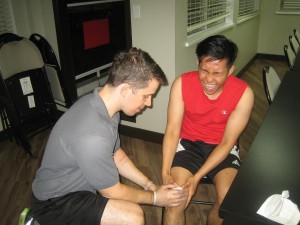Behind knee pain is soreness or discomfort at the back part of the knee joint. It can occur with or without movement and can be intense enough to limit movement. This is usually an indication of Baker’s cyst which involves the accumulation of synovial fluid at the back of the knee. It is important to note that the synovial fluid helps lubricate the joints and minimizes friction amidst the joint cartilages.
Nevertheless, behind knee pain might also be an indication of deep vein thrombosis that can be serious and dangerous.
What are the accompanying symptoms with behind knee pain?
Behind knee pain often arises with other symptoms that vary depending on the underlying cause. In most cases, it often includes swelling, redness, inflammation, pain or soreness.
If the individual has other symptoms with behind knee pain, a doctor must be consulted. The usual symptoms include the following:
- Swelling
Behind knee pain might be brought about by a mild condition such as a ripped hamstring but it usually responds well to adequate rest and self-care measures. - Stiffness
- Inability or difficulty placing weight on the knee
- Diminished knee mobility
- Pain when the affected leg is stretched
What are the causes?
Behind knee pain might be brought about by a mild condition such as a ripped hamstring but it usually responds well to adequate rest and self-care measures. Nevertheless, it can be due to a Baker’s cyst or deep vein thrombosis. Unlike Baker’s cyst, deep vein thrombosis is a dangerous condition that requires immediate treatment.
In some cases, behind knee pain can be due to chronic degenerative conditions such as rheumatoid arthritis and osteoarthritis.
Other usual causes include the following:
- Overuse injury
- Osteoarthritis
- Repetitive movement
- Rheumatoid arthritis
- Torn hamstring muscle
- Torn cartilage or ligament
- Peripheral vascular disease
- Deep vein thrombosis
Quick Note / Disclaimer
The material posted on this page on behind knee pain is for learning and educational purposes only. To learn to recognize and manage joint injuries and conditions, register for a first aid and CPR course with Toronto First Aid.

